
© 2010-2022 by Fine Arts of the Southwest, Inc. All rights reserved.
Unauthorized reproduction or use is strictly prohibited by law.
An extraordinary original pen and ink drawing of a
Hopi Pueblo village by Charles Loloma, c. 1970-1980
Ex: Charles and Georgia Loloma Collection, Hotevilla and Phoenix, AZ, Santa Fe, NM
The world-renowned Hopi jewelry artist Charles Loloma (1921-1991) actually began his long artistic career as a young teenager in the late1930’s working as a painting assistant for the great Hopi artist and educator, Fred Kabotie (1900-1986). The young Loloma had been recognized by Kabotie at an early age as something of an artistic prodigy and in this capacity, he helped paint a beautiful series of large Hopi Kachina murals for the landmark Golden Gate International Exposition in San Francisco in 1938-39 several of which are pictured here. In addition to his highly-accomplished painting skills, Loloma went on to undertake a serious study of ceramics in the late 1940’s and, along with his first wife, Otellie Pasiyeva Loloma (1921-1993), became a distinguished professional art pottery maker.
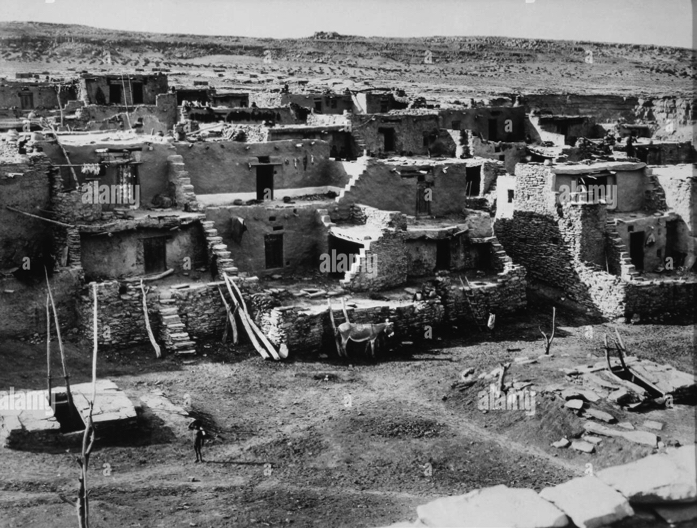
At center, Charles Loloma’s Hopi Kachina paintings on display at the 1939 Golden Gate International Exposition in San Francisco. At left and right, two of these same Kachina paintings on display today at the Denver Art Museum, gift of the Indian Arts and Crafts Board.
Left and right photo source and © Denver Art Museum, Native Arts Department. Center photo reproduced in
"Loloma, Beauty is His Name", by Martha Hopkins Struever, Wheelwright Museum, Santa Fe, 2005, pp. 5.
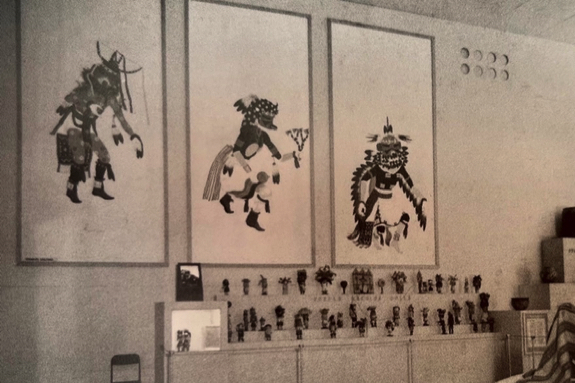
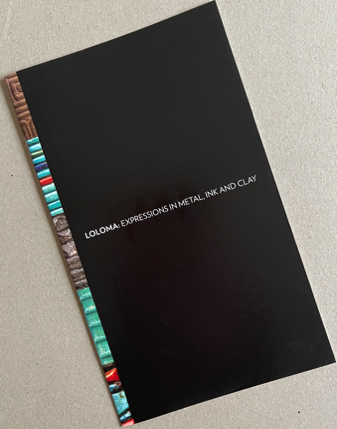
The Heard Museum's catalog of the exhibition, "Loloma: Expressions in Metal, Ink and Clay", 2015.
"Charles Loloma was a Hopi man. The sacred landscape of his life and death is the ancient world of Hopi; his life was of its life, his spirit of its spirit. From that world he came, into it he returned. From his first breath to his last, he was true to it."
-Writer, N. Scott Momaday, from his 1991 eulogy of Charles Loloma
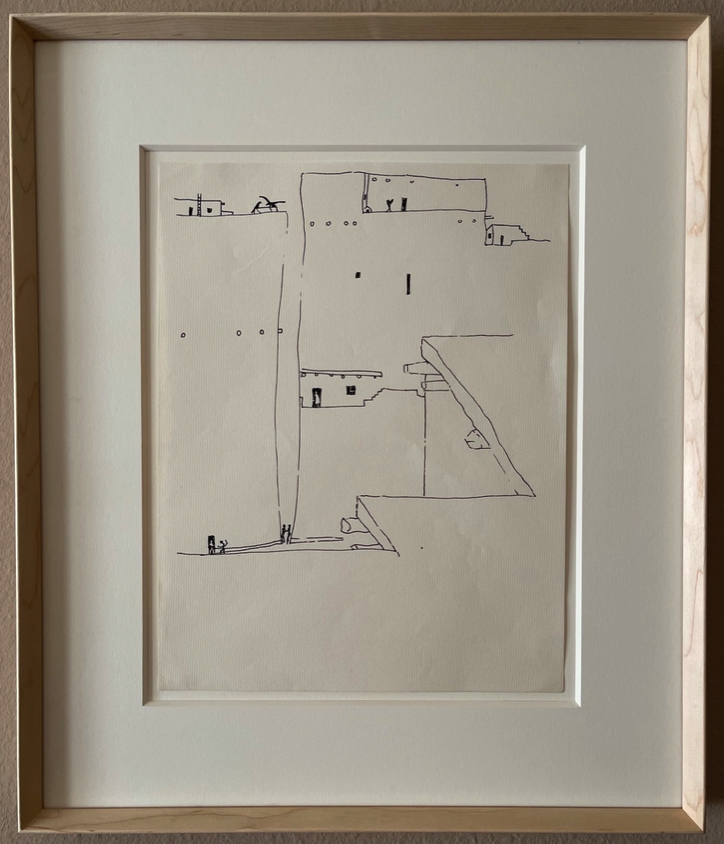
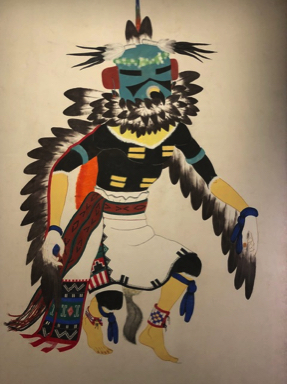
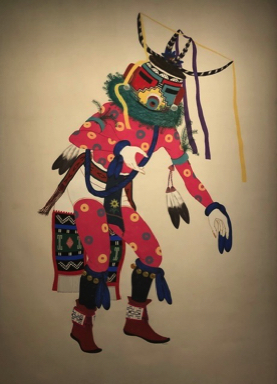
Only starting in the very late 1940’s and early 1950’s did Loloma begin his initial experimentations with jewelry-making which would eventually become his defining artistic career and legacy, yet through it all he kept on making drawings; of abstract compositions, Hopi village scenes, architectural renderings, landscapes, personal portraits and occasionally,
of Hopi kachinas. There is no solid evidence that Loloma ever sold his drawings in any sort of commercial manner, however, he mostly made them for himself or gave them as gifts to various friends, colleagues and family so in the marketplace they are quite scarce and very difficult to come by. The Heard Museum in Phoenix, AZ staged a wonderful exhibition of some of these drawings along with jewelry and pottery pieces in 2015 entitled "Loloma: Expressions in Metal, Ink and Clay".
And not only are they extremely rare, Loloma’s drawings are simply remarkable in their breathtaking and unique quality and beauty. We have had perhaps only fifteen or so of Charles’ drawings in all over the past 35-plus years and in our opinions this is one of the finest and most interesting ones we have had yet, a distinguished Hopi artist’s view of a Hopi village. The overall precision, detail and sophisticated technique evident in this work are just astounding, the line is precise and sure-handed yet delicate, the presentation of the age-old village is solid and permanent yet light and ethereal at the same time. The small details of the villagers having animated conversations in the doorways and of the ritual captive eagles living on the rooftop are acutely observed and sensitively recorded. There is a great sense of wry and whimsical humor for which the Hopi are well known evident in the portrayals and postures of the various villagers.
One can also see that Loloma drew the village largely in the negative which is to say that he left large open spaces in
the design which are as much an important part of the drawing as are the solid areas he filled in. We are not certain which specific village at Hopi this might be, possibly Old Oraibi (seen above) which was near Loloma’s home village of Hotevilla on the Hopi Third Mesa but it might not actually be any specific village, it might rather be a stylized artistically rendered Hopi village created out of Charles’ imagination and deep knowledge of and understanding of his homeland.
The drawing is done in fine black calligraphy pen and ink on nicely textured art paper and it measures 11 1/2” in height by 9” in width” (sight). The framed dimensions are 17 1/2” in height” by 15” in width. The frame is 1 3/4” in depth. The drawing is in generally excellent original condition. There are one or two very minor creases and abrasions to the paper surface.
The drawing has been archivally island matted to the highest conservation standards and it is most beautifully and appropriately framed in a custom-made hand-carved natural maple wood frame by Goldleaf Framemakers of Santa Fe,
Santa Fe’s finest fine art framers, using state-of-the-art ultraviolet light-resistant "TruVue" Museum conservation glass.
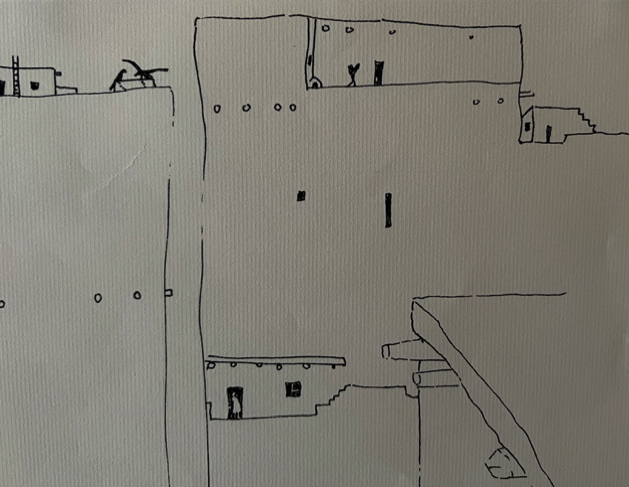

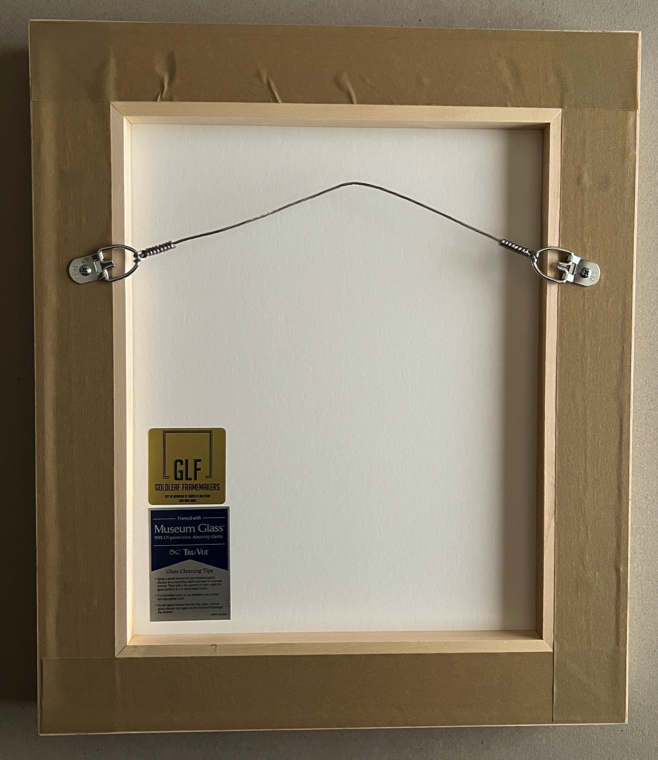
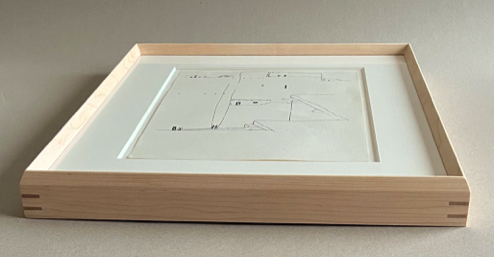
View of Old Oraibi Village, c. 1910.
Photo source and © Alamy Stock Photos
The drawing is not signed in Loloma's typical fashion with his last name at the lower center or right, but there appears
to be a "signature" of sorts tucked into a small window near the very center of the drawing as shown above. In one of the dark colored windows, there is a clearly deliberate and distinct reverse initial letter "L" visible. Regardless of whether this initial is an actual signature, there is no question about its authorship or authenticity. The drawing has the absolutely perfect provenance; it came directly from the personal private collection of Charles Loloma himself and his second wife Georgia Voisard Loloma. That Loloma kept this drawing for years after he made it essentially for the rest of his life says quite a lot about how much he valued t he piece and how much it meant to him. After Charles’ death in 1991 the drawing passed to Georgia Loloma and after her death in 2021 we acquired it from her estate.
This exquisite drawing is a true and rare treasure in every way; a world-class artwork by a world-class artist depicting
his ancient ancestral Hopi homeland. As such it is worthy of an honored place in any collection, public or private.
To view another original Charles Loloma drawing of a Hopi village available on our website, please click here.
Price $2,950
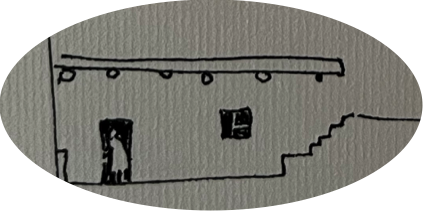
What is that "L" in the window?